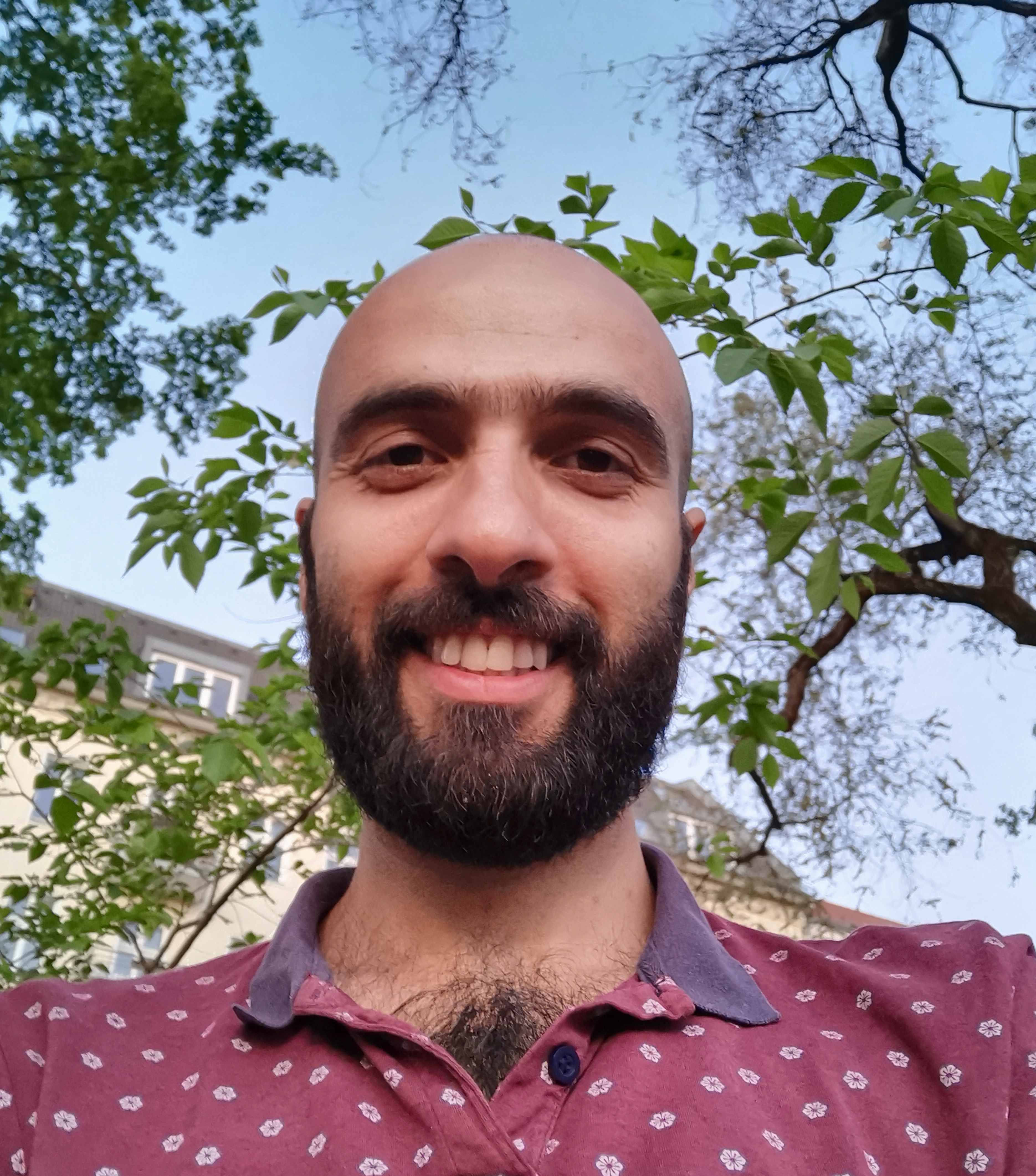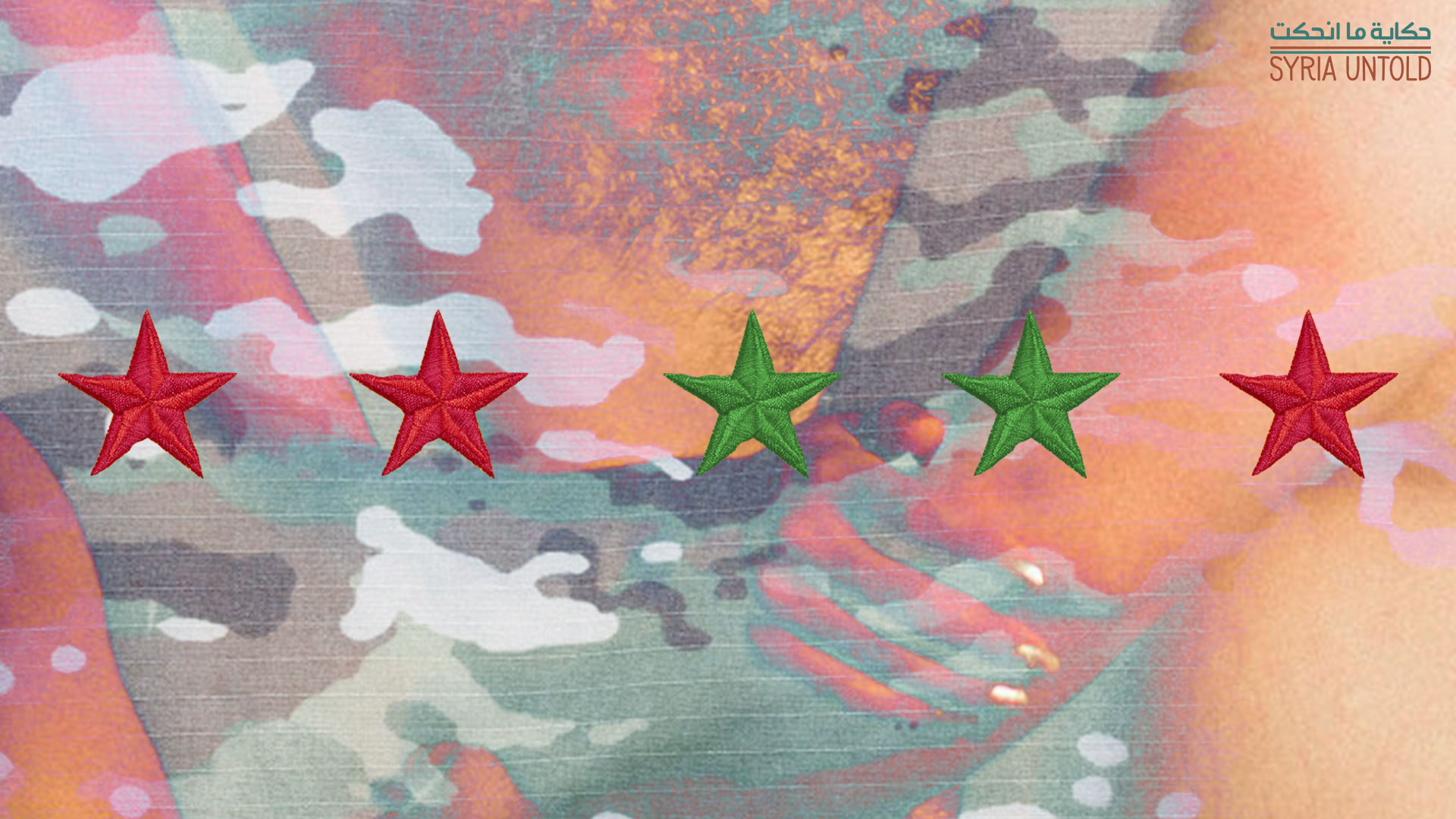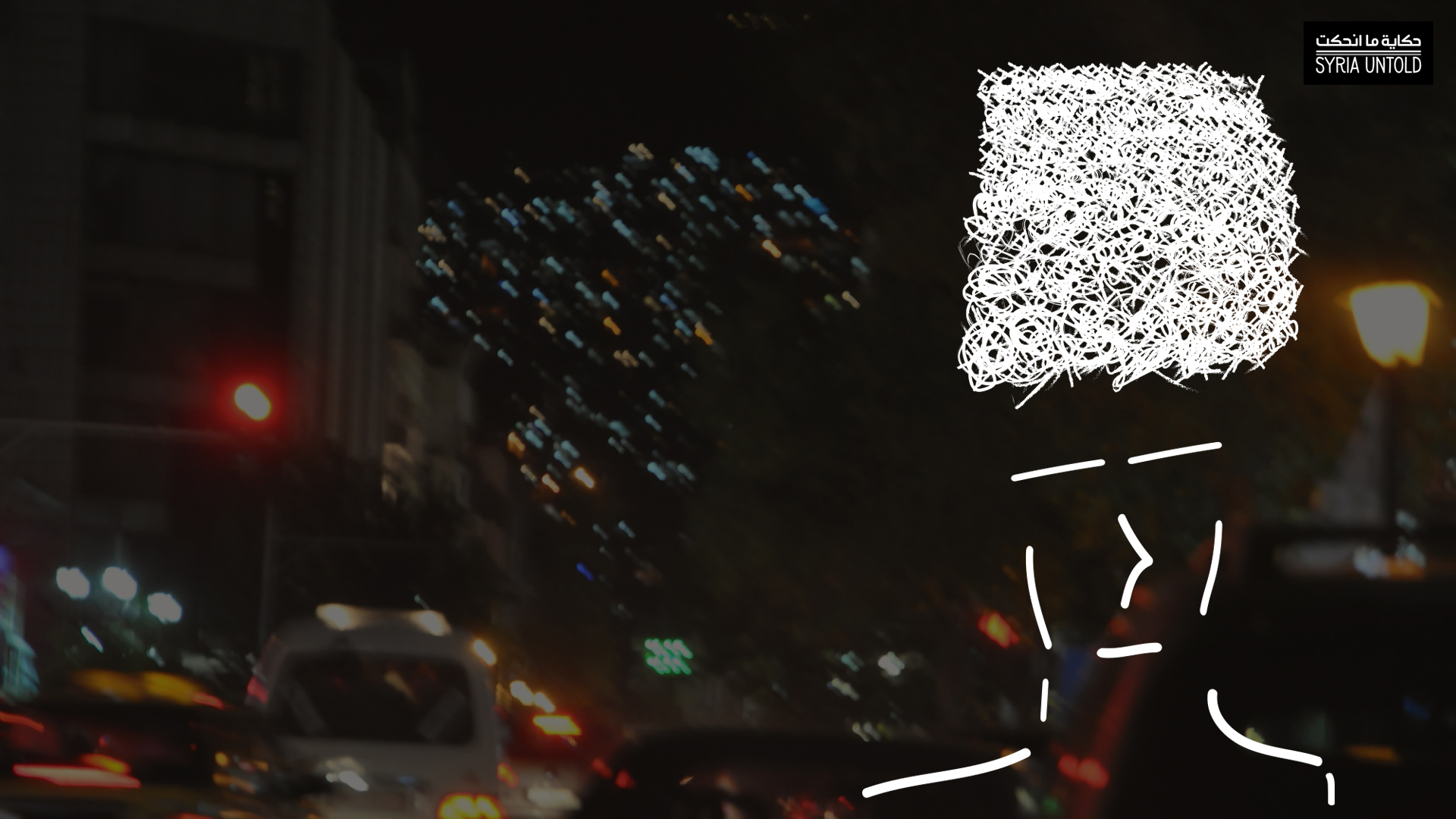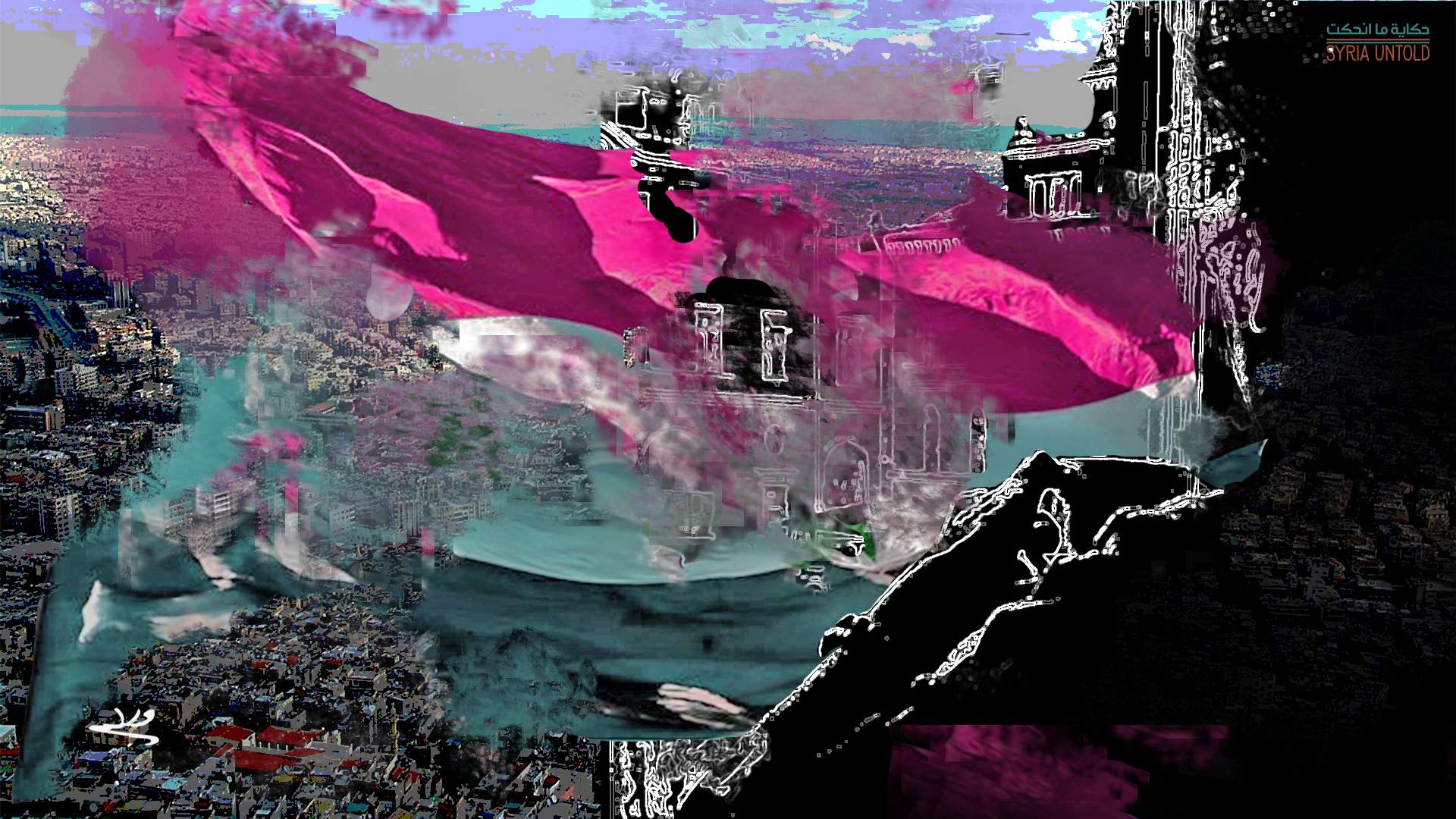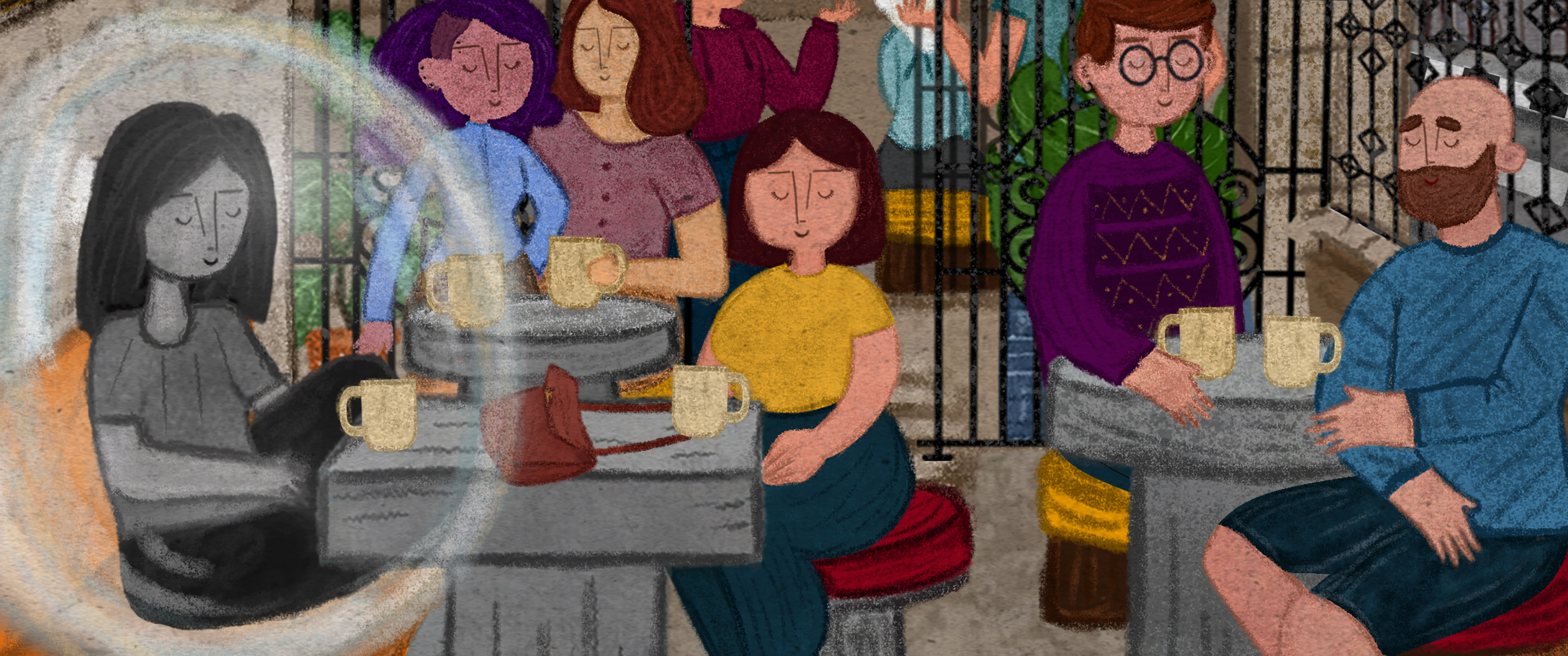This article is part of the second round of our series on LGBTIQ Syria, published by guest editor Fadi Saleh. Read this article in Arabic here.
When searching for the hegemonic Syrian discourses around gender and sexuality in general, and homosexuality and transgender issues in particular, we often direct our attention to the usual culprits: mainstream legal, religious, or social discourses. It makes sense to look there, of course, as these discourses have strongly shaped our collective Syrian consciousness. For decades, they have defined what is acceptable and what is not regarding our relationships with our bodies, gender identities, and sexualities as Syrian citizens—whether under the al-Assad regime or during the last decade of revolution, conflicts, wars and displacement.
However, it is rare for us to start the search by trying to find that one “effeminate male character” we remember from long ago, who appeared for no longer than five minutes in an old, famous TV series, or for that gender non-conforming character in a beloved children’s cartoon that we were allowed to watch as kids, or for that “unconventional” character that made an appearance in a novel or a play. In this file, this is exactly what we will do: we will excavate unusual, hidden and forgotten places to write a Syrian queer history that diverges from the normative discourse. Here is a queer history inspired by mainstream popular culture as conveyed in media, literature and the arts. Contributors to this file have engaged with the following questions:
How have LGBTIQ issues been represented in mainstream Syrian literary, artistic and other media over the last few decades, and how did these representations change after the revolution?
How did artists working with all kinds of media, both in Syria and its diaspora, resist exclusionary and negative representations and narratives? How do they create new models, frameworks, stories and narratives that celebrate gender and sexual diversity in innovative ways?
How can we create a sustainable queer archive that has the potential to become a reference for LGBTIQ people, civil society and the Syrian cultural sphere, so that LGBTIQ issues become central to the ways we imagine, represent and write about our history?
After the 2011 uprisings, there was a noticeable upsurge in Syrian cultural, artistic and literary production, especially independently in the diaspora, that covered various issues in new light, with more freedom and less censorship. That said, while I can more readily recall the names of many people working in the arts in general both inside and outside of Syria, I have trouble remembering a Syrian queer presence in the cultural public sphere. The explanation for this is simple, of course. As the contributions in our last file on queerness and the revolution made clear, the discrimination and exclusion that Syrian LGBTIQ people suffered under the regime and the warring factions remain reflected in the work of political, artistic and cultural civil society organizations after the revolution.
Here I am not talking about the lone exceptions of a website publishing an article by a queer person or a drawing by a trans person. My critique concerns the clear absence of queer arts, the lack of representations of queerness and trans issues in literary and artistic production on a large scale and of the systematic failure to include Syrian LGBTIQ artists in the mainstream Syrian public sphere. This is a public sphere that continues to discuss freedom, authoritarianism, the war and alternative archives as if they were purely abstract concepts unrelated to gender, sexuality or the dominant imaginary of the ideal citizen as heterosexual and cisgender.
Unfortunately, it is still the case that civil society organizations do not even attempt to radically shift these structures in order to create more safe working environments for Syrian LGBTIQ people.
My critique is not directed at the artistic, cultural or literary works being produced and mainstreamed, nor at the artists or writers themselves. It rather addresses the structures through which the Syrian revolutionary civil society was built and the extreme caution it still exercises when approaching or representing certain issues. Unfortunately, it is still the case that civil society organizations do not even attempt to radically shift these structures in order to create more safe working environments for Syrian LGBTIQ people so that they become an essential part of—not just an exotic addition to—the Syrian artistic and cultural movement.
That critique notwithstanding, these structural exclusions give the general impression that there is a complete absence of cultural, literary, media or artistic production that touches upon LGBTIQ issues in Syria and its Diaspora. That impression is far from reality. While it might be true that LGBTIQ issues have not been given priority, this does not automatically mean that they are completely absent. There have been many works that focused on non-normative genders and sexualities in the Syrian context, both before and after the revolution.
For example, Syrian literature and television dramas have sporadically addressed LGBTIQ issues, sometimes coyly and other times daringly. Queer and gender non-conforming characters have always been part and parcel of the ways writers and artists imagined everyday life, the “street” and social and political life in Syria.
In the shadow of that flag
13 October 2020
Strategies for rebellion: A queer reading of the Syrian revolution
06 October 2020
So, we set off to search for and archive those characters, stories, hints and appearances that we have read or watched and that left a lingering trace in us, our consciousness, thinking and bodies. In the process of compiling this file, we were continuously surprised and caught off guard by all that we had actively buried in the depths of our memories. There was so much that we had dissociated from or forgotten due to the harsh or oppressive nature of our memories at times, or their elusive and ephemeral presence at other times. During our conversations as contributors, we tried to collectively excavate and remember as much as possible. This exercise showed us that we need to re-evaluate the past in order to document and analyze the ways that homosexuality, transness or non-normative genders and sexualities were represented and mainstreamed in the public sphere and Syrian imaginary in the last decades.
Despite the scarce presence of queer and trans representations in the culture sphere, Syrian cultural memory—whether elementary school books, TV dramas, arts exhibitions or popular music—still mainstreams, normalizes and enforces cis-heteronormativity as the most ideal and only “nature” to which we should all aspire. Where did queer and trans kids and teenagers search for themselves when there were no characters that looked like them and no role models to follow? They turned to their queer imagination, of course! Queer imagination allowed them to find themselves beyond what is “directly” represented and helped them to identify with those elements of “difference” or non-conformity that they could relate to. In oppressive environments, queer people often reimagine these representations from their own perspectives and add new meanings and dimensions to them. They create their own symbols of revolutionary non-conformity which they then connect with, even if the characters were not explicitly queer or transgender. How many powerful female characters have we seen, characters whose suffering, ostracization and resistance we identified with as LGBTIQ+ people? And how often did we identity with and understand the pain of a presumably heterosexual male character who did not meet society’s expectations, a man who is represented as a failure or a shame to “real” masculinity? [i]
In this new series of articles, we continue what we started in our last series in attempting to excavate and archive queer stories. We are working to create an alternative memory that puts the Syrian LGBTIQ community on the Syrian political and cultural map in new, creative ways, and by Syrian queer and trans persons themselves. Whether in TV series, novels, children’s cartoons or any work done through other media, there is a history of representations and narratives that must be documented, analyzed and brought to light. Such representations are intrinsic to Syria’s artistic and cultural history, their importance broader than that of a community that is considered separate or even “foreign.” In this project, we will trace these histories in order to archive all that is less normative and less acceptable in the Syrian cultural public sphere. We will produce readings, analyses, and new artistic pieces with the aim of creating a queer cultural archive that expands, rectifies or introduces new perspectives on LGBTIQ issues, culture and society in Syria.
This file will include analytical articles discussing, among other things, literary, artistic, and TV representations of LGBTIQ issues and characters that could be considered “queer,”or unfamiliar; those that fall outside of acceptable norms of gender and sexuality. It is thereby irrelevant whether the representation is negative or positive, supportive or oppressive, for the aim is to utilize a queer approach and provide a critical reading of the ways gay or transgender characters are represented and the discourses around non-normative gender and sexuality in the Syrian context are shaped.
A small cafe in Damascus
01 January 2021
We will also feature interviews with a number of queer artists and media makers to focus on their works. How do they centralize LGBTIQ Syrian issues and address the challenges faced by LGBTIQ people working in the fields of culture and the arts. We will ask them about the strategies they have adopted, and their advice on how to make the Syrian cultural and artistic public sphere more diverse and accepting.
Lastly, this file will include different artistic pieces by LGBTIQ Syrians. Through various media (drawing, audio, video) they will create new strategies for representing, narrating and imagining queerness, transness and gender non-conformity. These different artistic pieces constitute a critique of and an intervention into the Syrian cultural and artistic public sphere, which often does not make space for Syrian LGBTIQ artists to share their queer art and create an unconventional artistic archive.
This file is only a first step in a larger conversation about arts and culture in Syria. It is an attempt at documenting what has been done and what is being done today to establish an alternative artistic and cultural archive. Such an archive, even if humble, could serve as an overview of how Syrian LGBTIQ people see, read, critique and innovate in ways that diverge from the mainstream to create their own safe queer spaces, deconstruct the concepts and frameworks through which we all learned to see, read, or make art, and leave some traces of themselves, their experiences, and their worlds in everything they create.
[i] Queer theorist Jose Esteban Munõz called this process “disidentification”. He argued that, when LGBTIQ people do not identify with heterosexual characters or messages in visual or popular culture, they still find a different way of “identifying” with what they are seeing. They do that by disidentifying with and rejecting the original message encoded in the narratives, representations, or characters, which are meant enforce and reproduce cis-heternormativity, and they search for those “different” elements that cause some cracks in the representation and do not fit, and re-encode them with a queer subplot or meaning that better suits their needs and desires. For more on this, see: José Esteban Munõz.1999. Disidentifications: Queers of Color and the Performance of Politics. Minnesota: University of Minnesota Press.


